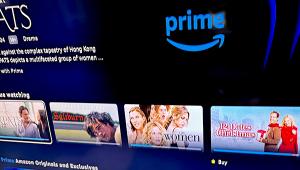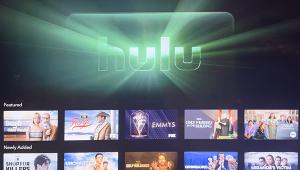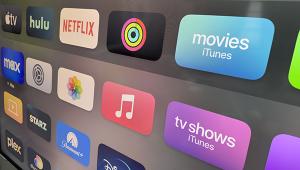Hands On: Apple TV+ Streaming Service

The original programs launched on November 1. The first two episodes of each show are free. You’ll have to subscribe to the Apple TV+ service to see the third episode. The service is a reasonable $4.99/month. While it’s not expensive, only 10 shows are available at launch. If you purchased an iPad, iPhone, Mac, or Apple TV after September 10, there is a limited-time offer for a free year of Apple TV+.
The Apple TV app has become available on more non-Apple devices, including Samsung smart TVs, many Roku players and Roku TV, and on newer Amazon Fire TV devices. Apple has plans to bring the app to LG, Sony, and Vizio TVs soon. It is also available at tv.apple.com.
As expected, the best way to watch the Apple TV app is on an Apple TV device. These offer the best performance with excellent sound and picture quality.
I also tested the app on the Roku Ultra, the new Roku soundbar, and on a Series 5 TCL Roku TV. There was a bit of a delay in starting a video because of buffering issues with all Roku devices. There was a bonus, however, when watching Apple TV+ shows in 4K with high dynamic range (HDR) on the Roku TV: The app displayed HDR during playback, signaling that I could go into the TV’s settings and choose brighter or darker HDR options. In addition to advanced picture controls, the inexpensive Roku TV delivered deep blacks that enhanced Apple’s beautifully shot original series, See.
While the Apple TV app is available for Amazon Fire TV devices, it is currently only available on the newest generation of Fire TVs. Amazon Appstore doesn’t offer the app for my 2018 Fire TV cube and older Fire TV stick 4K but says it will be available “soon” for previous generations of Fire TV.
I would have expected that the new original shows would be readily available at the top of the Apple TV app’s home screen. Instead, I had to search to see all of them in one place — which turned out to be 11 rows down from the top, below other recommended shows from several streaming partners.
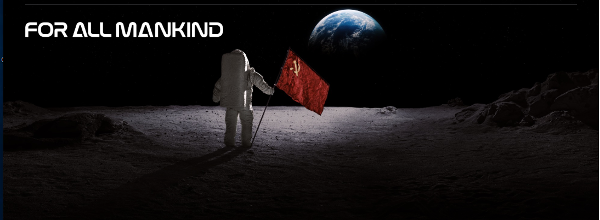
Perhaps Apple is confident that users search for the show titles they want, as early research indicates marketing efforts have created high demand for its original programming. Parrot Analytics, for example, has reported that demand for See and For All Mankind is running more than 11 times that of an average TV show.
Apple is also holding back and not making all episodes of its top series available at launch. Although I was hoping for a weekend of binging on The Morning Show, only three episodes were available. The same was true for See and For All Mankind. It’s a smart move. Typically, the third episode of a show is when viewers have learned enough about the characters and plot to become invested in watching the rest of the series.
Apple seems to be going after every demographic with its selection of originals — women, men, young adults, and kids. Each series has a diverse cast — including an Alice in Wonderland character that isn’t blonde-haired and blue-eyed.
The Morning Show has an intelligent script that relates to current headline news, superb acting by an A-list cast that includes Jennifer Aniston, Reese Witherspoon, and Steve Carell and excellent direction by Mimi Leder (The Leftovers, The West Wing, The Peacemaker). Following a morning TV news show, it looks at the power play between women and men in the workplace.
While See takes place in the future, it has a tribal theme with amazing scenery and production value. The show is about a future where humankind had gone blind from a virus. Hundreds of years in the future, people have made do living off the land, and the idea of vision has become a legend, or a magical power of witches. The series begins with the birth of sighted children. In what reminds me of a video game, the tribes battle each other and must avoid capture through a lot of violence — from slit throats to burning heretics alive. Many of the cast and crew that worked on the show are visually impaired or blind. Note that See may not be appropriate for your pre-teen. Beyond the obvious violent scenes, the unique way the queen “prays” could lead to an awkward conversation.
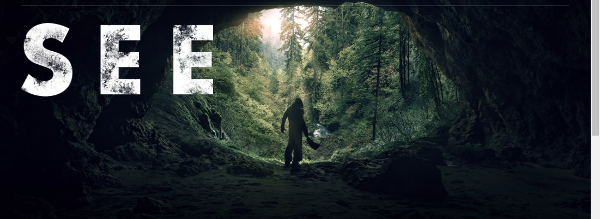
What if history had been different? That’s the premise of For All Mankind. In this reality, the Russians were first to land on the moon and the space race never ended. The storyline of the series includes women as astronauts and engineers. Fictional NASA programs are interspersed with actual news footage of the era — Kennedy, Nixon, women’s lib protests, etc. Real world astronauts’ names are bantered about along with the fictional characters. Historic footage is manipulated to put words in the mouths of the presidents and other well-known politicians and scientists.
Aside from the fictional TV shows, the Elephant Queen is a wildlife documentary movie about an African elephant and her herd. When I saw the unique animal behaviors captured by the videographers, my jaw dropped. It’s every bit as good as other animal kingdom documentaries like Planet Earth or any National Geographic Wildlife film. Chiwetel Ejiofor brings drama and fun to the narration.
Dickinson is aimed at the younger adult demographic. The story is about Emily Dickinson. While it takes place in the 19th century with the props, locations and clothing of the era, the main character speaks in 2019 colloquialisms, and the background music is hip hop. It is supposed to be a black comedy. Perhaps the target audience will appreciate it more than I did. Ten half-hour episodes are available at launch.
Aimed at a still younger demographic, Ghost Writer follows four middle-schoolers who must solve ghostly mysteries to return famous fictional characters to their classic books — Alice Through the Looking Glass, Jungle Book, etc. The stories are pleasant for any age. Still, the poorly made costumes and passable special effects indicate that this show didn’t have as big a budget as the top three shows. Seven half-hour episodes are available.
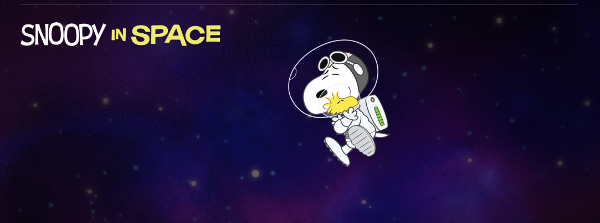
Snoopy in Space is a series of a dozen 10-minute (or less) episodes that follow the Peanuts gang as they go to NASA and learn about the space program. The newly produced animated series is true to the original Peanuts cartoons as characters keep their classic personalities and movements without become a campy homage that often happens when beloved characters are revived in a new series.
Helpsters is for the youngest crowd. Its Muppet characters teach life lessons. In the first episode, the furry monsters teach kids about brainstorming and planning. It goes beyond the ABCs to reasoning and problem-solving. Six episodes are available.
Lastly, there is Oprah’s Book Club, where Oprah Winfrey discusses a different book with the author in each episode. It is best to watch the episode after you’ve read the book as she warns that there will be spoilers in the book discussion during the show. Only the first episode of the series is available.
For those of us who can’t help but binge on a TV show, Apple is in control of our appetite by limiting the number of episodes in each series. Every Friday starting November 8, another episode will be released. There are still more series to come, including M. Night Shyamalan’s Servant that will be released on November 28. Truth be Told and Little America will be released on December 6 along with the movies Hala and The Banker. Apple TV+ is certainly worth $4.99/month, especially considering content is available in 4K HDR. We will have to wait and see whether there will be enough new originals to hold onto subscribers from month to month.











